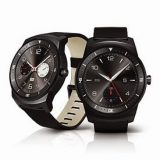As technology publications, we can focus clearly on the impact of recent events at major consumer electronics industry of Japan – industry millions of dollars in cash equipment, and services to help the relief response efforts. So far, about Canon, Panasonic and Sony all 300 million yen (3.67 million U.S. dollars) in donations. Sony is also matching employee contributions, such as some, that’s a whopping 500 million yen donation ($ 6,100,000) in aid. On the equipment side, Sony is donating about 30,000 radios during relief operations offers 10 000 Panasonic radios, 10,000 flashlights, batteries and 500,000. NEC, Kyocera and Epson are each to donate 100 million yen in funds, computers and telecommunications equipment and IT.
While it is too early to have to quantify the direct impact that the earthquake, tsunami and ongoing nuclear issues on the global tech industry, the size of the problem more clearly now that during the initial chaos. Click through to see how all these laptop batteries iPads risk.
Already we see reports predicting shortages of components, which could eventually create delays and / or the prices of our favorite gadgets to increase. 32-gigabit NAND prices have already jumped by 18 percent by DRAMeXchange news that Toshiba had suspended operations at chip factory in Iwate Prefecture. Remember, Japan produces about 40 percent of the global NAND flash, a lot of from Toshiba – the supplier was lurking in second-IPAD Who says that the plant seems Tosh suffered no significant damage them, it is still evaluating the situation with several aftershocks (probably take a month or two) and do not know when it can restart production.
Of course, the integrity of facilities on the only part of the production puzzle. Plants require more raw material transportation work requiring railways, roads and ports, all readily available fuel and power sets. In the latter case, Tokyo Electric has lost 27 percent of its electricity generation capacity, they rely on 10 million kilowatts short demand. As a result, begin to Tokyo, where many of the companies headquarters of the Japanese consumer electronics, and electricity rationing eight other prefectures by the end of April – maybe more than necessary power demand spikes with summer air conditioning . Rolling outages will last anywhere from 3-6 hours. Toshiba and Sony (and probably others) have already given their agreement with government requests to turn off all unnecessary power-consuming facilities and operations not related to social and economic activities known.
Besides the impact on supply flash memory, we begin a more detailed look at the ingredients to see impact of recent events. Sony has stopped production or limited production at eight sets and keeps damage to restore power. The condition affects Sony-built magnetic tape, optical films, laser teachers, lithium-ion batteries, CD, DVD and Blu-ray. Panasonic, Fuji Film, Nikon and Canon are all closed factories in the regions concerned, in relation to the production of digital cameras and lenses. Canon estimates that some of the facilities, including those held, interchangeable lenses produce both printers and ink cartridges online for up to several weeks, the production transferred to other locations, if not their system to come online next month.








